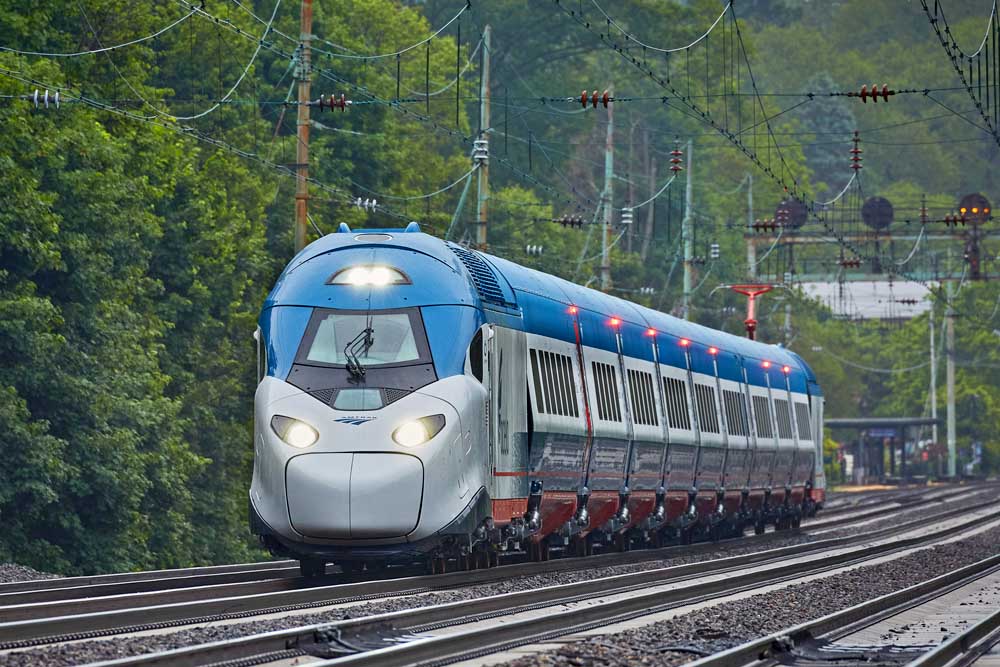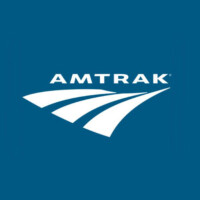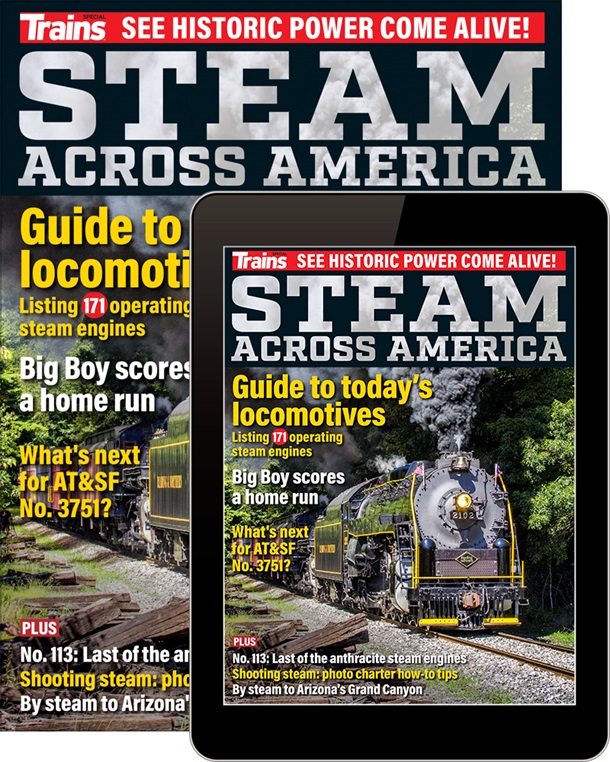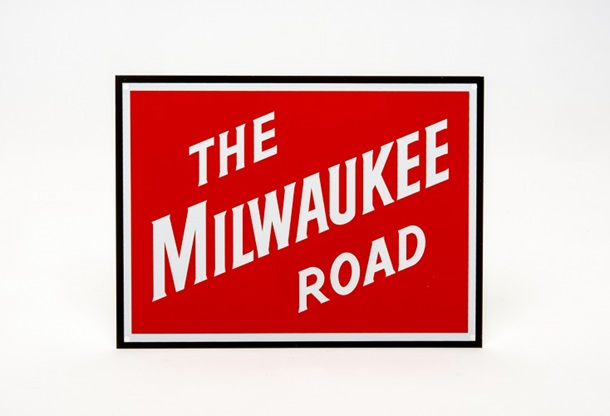
WASHINGTON — Amtrak has announced it expects ridership to top 2019 — pre-COVID — levels this year and reach a new all-time record high even though it currently has less capacity.

Ridership is reported 20% higher in the first 8 months of Amtrak’s budget year that began Oct. 1, 2023. Ticket revenue is showing a 10% increase versus the same period in 2023, according to written testimony by Amtrak CEO Stephen Gardner presented at a hearing of the U.S. House of Representatives subcommittee on Railroads, Pipelines, and Hazardous Materials on June 12.
“We are on target to set a new all-time ridership record by exceeding the 32.3 million passengers,” says Gardner. This would exceed the previous record set in 2019. From 2003 to the 2019 record, Amtrak saw a 45% passenger growth.
The lasting effects of the COVID pandemic still hamper Amtrak, according to Gardner. While the railroad’s year-to-date revenue is higher than in 2019, it “has been impacted by the reduced business travel since the pandemic as virtual meetings have replaced many short-duration business trips,” Gardner says.
The increases come despite capacity challenges in a number of critical areas, including:
- Delays in starting service with new Siemens Venture cars for state partners on Midwestern and California routes.
- Delays with the new Alstom Acela trainsets on the Northeast Corridor due to continued testing.
- Continued closures for extended periods of the Pacific Coast route in Southern California caused by increased erosion.
Amtrak previously announced that it plans to double its ridership across the system by 2040. Additionally, plans call for 20% weekday service increases along the Northeast Corridor over the next year.













Concerning the above comment of Amtrak state supported trains suffering a huge loss, how can they possibly suffer a loss when those contracts are cost plus affairs. Amtrak quotes the states a lump sum (which states are not allowed to review line by line…that’s proprietary information???) that states must pay. Again, how can they possibly lose money on them? All I know is that after the 2008 PRIA, the Pacific Surfliners went from making a profit to fares only covering 54% of costs. How could that happen when noting about the costs or operations of the trains changed? It’s because Amtrak was then able to charge whatever they wanted, no questions allowed. In my opinion its how they spread the cost of the NEC over the whole system
I do not know of anyone commenting on Amtrak’s accounting policies and procedures that has access to the company’s accounting records. Without this access, they do not know what they are talking about.
Amtrak’s primary financial statements, i.e. Balance Sheet, Statement of Operations, and Statement of Cash Flows are prepared in accordance with Generally Accepted Accounting Principles (GAAP). They are audited by EY, which is one of the worlds premier accounting and auditing firms.
The allocation of costs are governed by management or cost accounting principles, which set forth the acceptable methodologies for allocating costs, i.e., labor, materials, depreciation, etc. to operating segments.
Amtrak began showing the allocation of route variable costs, system fixed costs, etc. in FY22. They include the current capital expenses, but not any future capital expenditures. Until the future capital expenditures are made, they are just that: something that may or may not happen in the future.
Amtrak has also made available a description of the accounting methodologies used to determine the costs of its three operating segments, i.e., NEC, State Supported, and Long-distance trains. It is available online for anyone that wants to read it.
Once again Paul would you please enlighten us on why you are so hell bent that Amtrak should cover its cost or make a profit. At least explain which other forms of public transportation, bus, boat, plane subway, Uber, bicycle, Duck Boat, horse carriage, etc. actually make a profit or would exist without some sort of taxpayer support. I’d think as a reader of Trains you’d hope that more money would be spent to support long distance passenger trains in the U.S. I’m of the opinion that if trains were more accessible and convenient they’d actually become a serious part of our transportation system. Public transportation is just that PUBLIC. And as such has and will always be funded to varying degrees by the combined resources of everyone in the form of taxes. It’s always been that way and always will be. Amtrak has been starved of operating funds and horribly mismanaged over the years and has been the target of bureaucratic BS. But somehow in spite of this it survives and even grows. I’m assuming you’re a rail fan as a subscriber to Trains magazine. So why in the world would you join the “Eliminate Amtrak” crowd?
If any of you believe Amtrak’s accounting system conforms to GAAP. I have a neat bridge I’d like to sell you. For one example, the NEC is “profitable” because it does not include infrastructure costs, i.e. catenary construction and maintenance. Also, the LD’s are charged with expenses that are created in the east, and have no relevance to them. Check it out!
Not that this means much but my wife and I rode the CA Zephyr from Denver to Emeryville CA and it was a full train.
No 21, the southbound Texas Eagle, is an example of why Amtrak’s long-distance trains do not make any sense. The Eagle is due in San Antonio at 10:46 pm.
For the six days ended June 15, the train arrived in San Antonio, its end point, an average of 3 hours, 27 minutes late. The best time was 39 minutes late; the worst was 7 hours, 21 minutes late. Today’s train is estimated to arrive in San Antonio at 2:20 am.
Oh, well, there is a silver lining in nearly every cloud or so goes the saying. Many of the bars in San Antonio are open until the wee hours of the morning.
Just think what the passenger count would be if Amtrak had more equipment (short/medium/long haul) and if they could get over the route on time.
The subject is Amtrak. Not highways, motorists, airports, commercial airlines, waterways, etc.
Amtrak’s financial reporting documents use the same formats as for-profit companies, i.e., the financial statements reflect Generally Accepted Accounting Principles.
Irrespective of intent, Amtrak should at least cover its costs. It has never come close. Since its inception in 1971, as of FY23 it had a cumulative loss of $43.7 billion. When adjusted for inflation, the cumulative loss is close to $90 billion.
In FY23 the NEC had adjusted operating earnings of $202.8 million. The state supported trains had an adjusted operating loss of $273.4 million; the long-distance trains had an adjusted operating loss of $596.4 million.
A competent business person could see the problem immediately. It is the long-distance trains. They carry approximately 1.5% of intercity travelers and account for the lion’s share of Amtrak’s adjusted operating loss. If they were eliminated, in FY23 Amtrak’s adjusted net operating loss would have been $70.2 million, as opposed to its booked loss of $631 million.
The nation’s taxpayers do not have an obligation to fund trains that serve approximately 1.5% of intercity travelers. Doing so is throwing good money after bad.
On of the reasons we are unable to fix many of the nation’s public policy issues is because people do not focus on the presenting issue. They want to diffuse the issue by raising extraneous issues that have nothing to do with the issue that needs to be fixed. The issue in this discussion is Amtrak.
And why should Amtrak by law be required to cover its cost when absolutely NO other form of transportation in this country, public or private that uses taxpayer funded, roads, highways, airports or rivers cover their true cost. Please answer this for me Paul.
“A competent business person could see the problem immediately. It is the long-distance trains.”
It seems to me that Amtrak’s goals could/should/would be in the business of competing with the airlines with reliable and cost effective high speed passenger service. Perhaps then they could make a profit or break even and sell their “stock” to the private sector just like Conrail.
Profitability is not the goal, period. Just like airports, the interstate highway system, and the inland waterways! Being an ever-increasing enabler of mobility is the goal.
So true. Why oh why can’t someone figure a way to “subsidize” freight RR’s in order to be more accomodating to passenger service? Afterall,….. coast to coast travel was at one time, railroad. Now the “private/for profit” airlines enjoy lots of “support” (airports/air traffic control, etc.). Do these airlines pay a fee for this or is it just taxpayer funded? endmrw0617241406
Amtrak has never been profitable. Moreover, as long as it is saddled with the long-distance trains, it probably never will be. However, the fully allocated train operating losses declined by 14.4% between FY22 and FY23. For the company as a whole, from FY21 through FY23 the net loss declined from approximately $2 billion to approximately $1.7 billion, a decrease of 13.5%.
Salaries, wages, and benefits are a major cost hurdle for Amtrak. In FY23 they accounted for 63.5% of the company’s operating expenses and 77% of its operating revenues.
According to the Amtrak’s April 2024 Monthly Performance Report, as of April 30, 2024 – latest validated statistics, ridership Year to Date (YTD) had increased by 20% over the same 2023. The NEC saw a 24% increase; State Supported 20%, Long Distance 11%.
Seat miles increased 10%; passenger miles 17%, and train miles 8%.
NEC ridership increased from 6.4 million YTD 2023 to 7.9 million YTD 2024. State Supported ridership increased from 6.7 to 8.1 million; Long Distance ridership increased from 2.2 million to 2.4 million.
Operating revenues per seat mile declined 1%; operating expenses per seat mile fell by 2%. The cost recovery ratio fell from 79.8% in 2023 to 77.3% in 2024. The customer satisfaction index declined from 80.5 in 2023 to 78.6 in 2024.
Passenger related revenues, i.e., tickets, food and beverage, and state support increased 8.4% YTD 2024 vs. 2023. Total revenues increased 8.0%. Expenses increased 10.7% YTD 2024, led by an increase in salaries, wages, and benefits of 14.1%.
The YTD 2024 adjusted operating loss was 530.4 million, an increase of 19.5% over 2023. The total YTD loss of $1,179.1 million ($1.2 billion rounded) was an increase of 15.6% over 2023.
Figures at the end of April are for the first half of Amtrak’s fiscal year. A better picture is year over year numbers for Amtrak’s fiscal year, which ends at the end of September. In any case, the number of riders, whether an increase or a decrease, is not the whole story. The key question is whether Amtrak is coming any closer to covering its costs. It does not seem so.
Given how heavily subsidized airports, roadways, and waterways..directly or indirectly..Amtrak/commuter rail/light rail deserves to be funded as a social welfare deed just like the other transportation modes and NOT care about cost beyond the transportation organization is doing its due diligence to not cost more money than it does to do business and upkeep the equipment and infrastructure.
Note that they are counting passengers, not passenger-miles. The number of passengers is really just the number of journeys large or small. Passenger-miles, on the other hand, is the relevant unit of output for the system.
I want to second David’s pertinent comment. Passenger count makes sense for local and regional railroads, but for long-distance carriers such as airlines and Amtrak, revenue-passenger-miles is much more relevant. One passenger traveling between Chicago and Los Angeles should count more than 100 passengers riding between New York and Newark NJ.
One thing that they don’t explain is that the number of passengers does not equal the number of people. Recently on Train Orders a poster stated that Amtrak carried over 30 million people and thought that was too large a number for Congress to ignore. But, that 30 million passengers might translate to about half or a bit more people as each trip segment is counted as one passenger, but it still remains one person. So, if you go from Cleveland to Denver on the LSL and the Zephyr, one segment is Cleveland to Chicago and another segment is Chicago to Denver. For a round trip that is four segments (or passengers) but only one person. So, when Amtrak says 32 million passengers, they mean 32 million trip segments. Not people. this reduces the number of actual people dramatically specially for the long-distance trains where people are changing trains in Chicago.
ROBERT —- I’ve never seen a statistic as to the number of individual people who ride Amtrak in a given year. Thirty million rides probably means a single-digit million number of individuals nation of 350 million. For example, the friends/ family/ neighbors I know, most do not ride Amtrak, ever.
This month, I have flown Alaska Airlines, ridden Amtrak, walked, bicycled, ridden in cars (my own car and others’ cars), ridden in a hotel shuttle van, took the Seattle light rail, and the Seattle monorail. On a mile basis, Amtrak is in second to last place, ahead of the monorail only.
I got a hard lesson in what Americans think of Amtrak. Lost in downtown Seattle, I must have asked twenty or more people for directions to King Street Station (used by Amtrak and Sounder trains). Most had no idea, some sent me in the wrong direction, I finally found someone who never heard of the station but at least knew where King Street was.
Great news!
Yes, but…are they anywhere near approaching profitability?
Just think where they could have been had they been committed to keeping the existing fleet in service, returning damaged equipment, and successfully buying additional rolling stock.
“Just think where they could have been” if Coscia and Gardner hadn’t dynamited their (actually the public’s) railroad in March 2020 with the employee furloughs, the mothballing of locomotives and cars, and LD trains reduced to tri-weekly frequencies all on the heels of Richard Anderson’s “reign of terror” starting in 2018. Two former CEOs, David Gunn and Tom Downs, tried to tell them not to do it, that the service would never recover, but Coscia and Gardner wanted to kill off the LDs. And when Congress wouldn’t let them they countered by operating them with pint-sized consists. Coscia and Gardner knew Congress wouldn’t see what they were doing along with the train delays caused by SC44 mechanical troubles and other self-inflicted injuries. Why? Because the Congresscritters who hold the purse strings NEVER RIDE and get to see the good, the bad, and the ugly.
Mark — Stevie got a $600,000 bonus for degrading Amtrak. Someone must like him.
Boeing’s occasional mistakes make the news all the time. The media never seem to get around to the failures in passenger rail procurement.